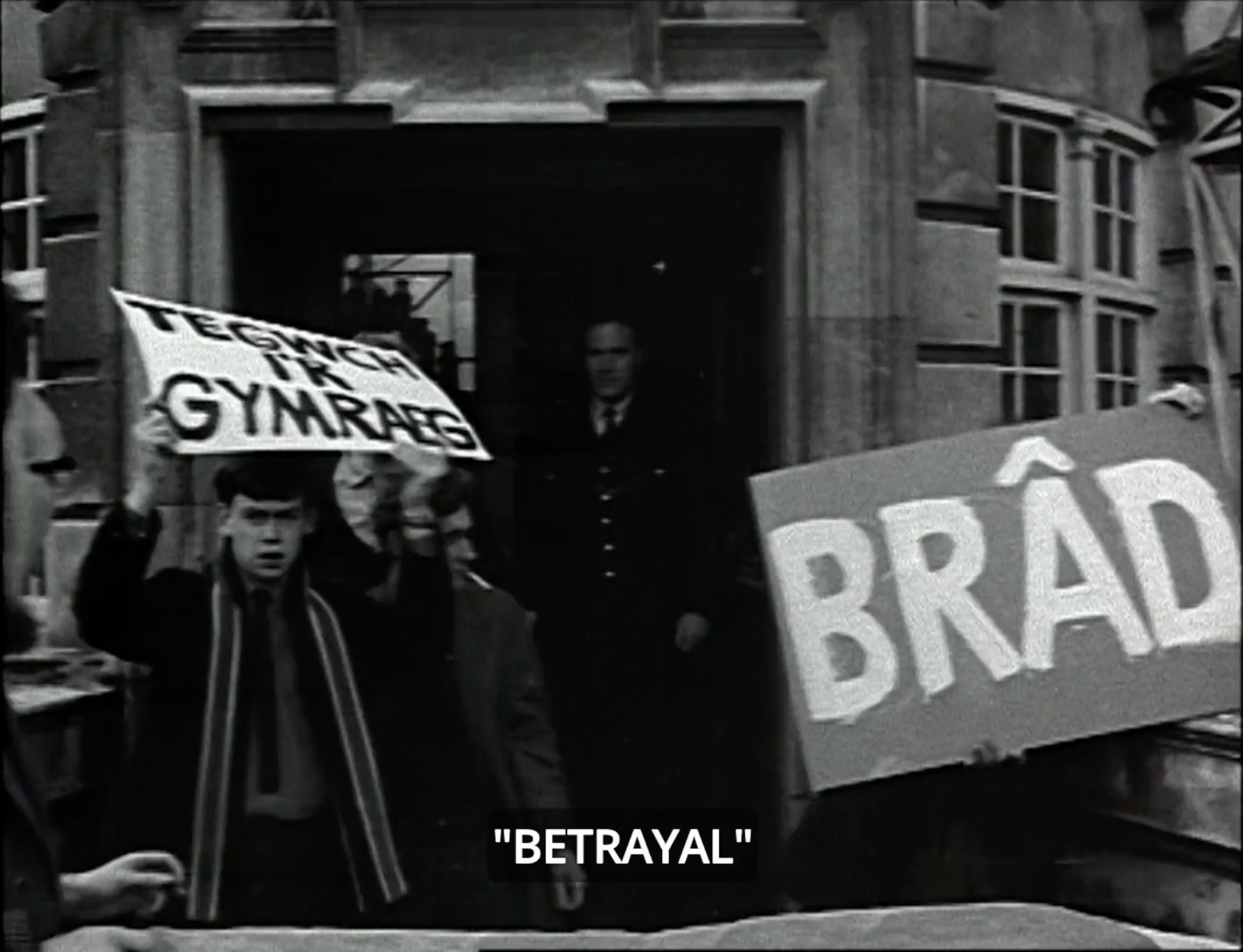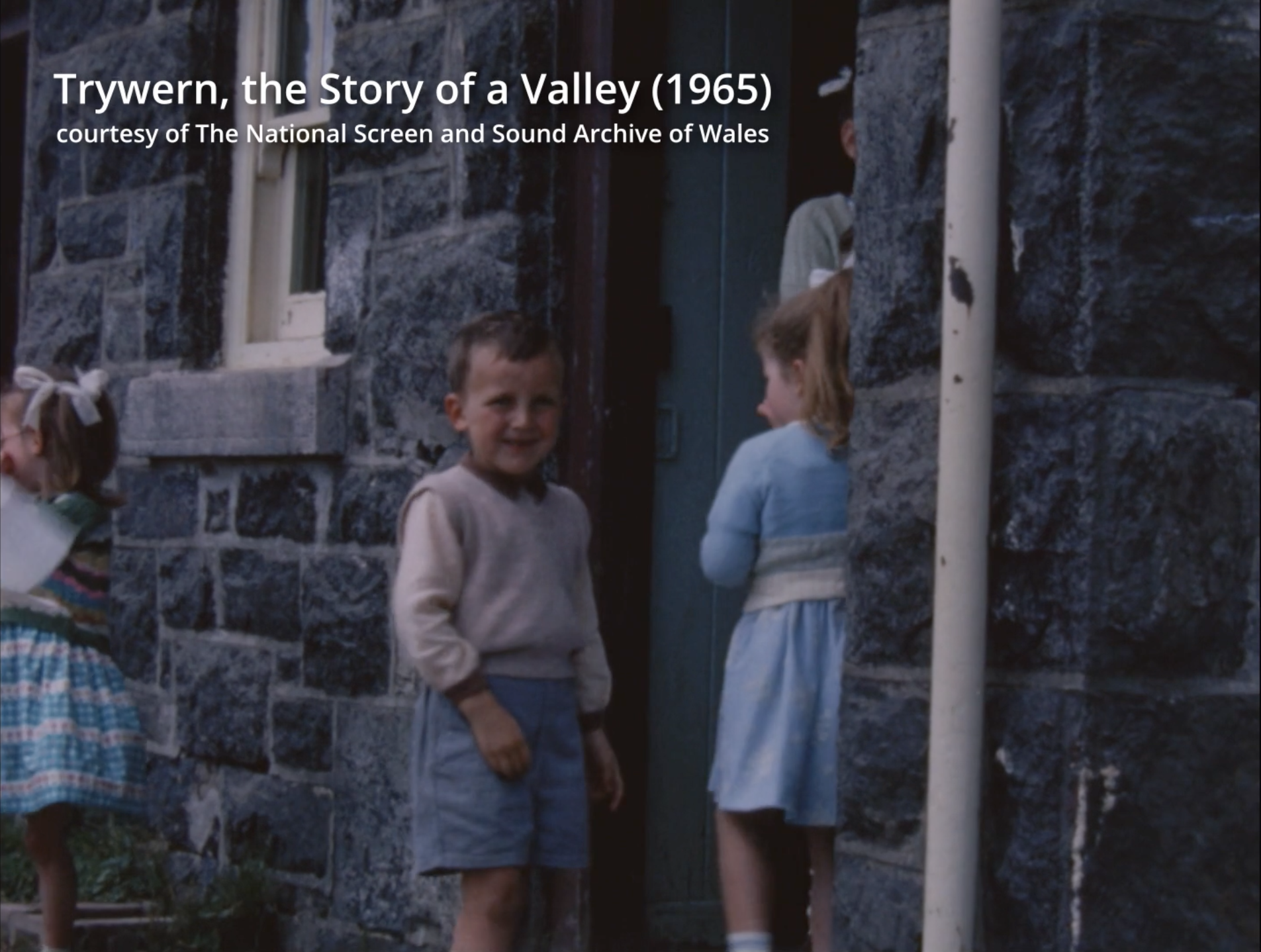Searching for Indigenous Languages in the UK National Film Archives
Written by Jo Reid | Translated by Kirsty Macdonald
Jo Reid is a curator and film writer who has previously curated for ICO’s Cinema of Ideas, Bird’s Eye View, Cinema Rediscovered. Jo was commissioned to work with Dùthchas co-director Kirsty Macdonald to research and curate a touring short programme of archive films relating to UK indigenous languages to be screened alongside Dùthchas as part of a UK cinema tour in November 2022.
National film archives contain many fascinating, frustrating, charming, and ordinary glimpses into the lives of minority language speakers from across the United Kingdom.
Still from Amharc Aneas / View From The South (1962) - Courtesy of Northern Ireland Screen Digital Film Archive & Gael Linn, Omas Media Ltd
Northern Ireland
Northern Ireland’s film archives are readily available to view at Northern Ireland Screen Digital Film Archive. Most Irish language material is from the 2000s onward, reflecting the push for Irish language television with the establishment of the Irish Language Broadcasting Fund.
Digging through the archive unearths an exciting mix of children's programming, historical documentaries, and glimpses into the lives of Irish speakers in Northern Ireland. The educational puppet show Bia Linn! teaches kids about food and cooking through the Irish language, Triúr Ban Óg follows three young women’s relationship to Irish and Puncaí na hÉireann reflects on the Irish punk rock scene of the 70s and 80s. However, while there is overlap between Northern Ireland and Republic of Ireland broadcasting, the majority of available material is produced in the Republic of Ireland, and then broadcast in Northern Ireland.
While 20th century Irish language footage is less readily available, there are a few clips that offer a tantalising glimpse into early/pre-troubles Irish. The television series Amharc Aneas/View from the South utilises newsreel footage from the Republic of Ireland to shed light on how Northern Ireland was viewed by its neighbour. Furthermore, At the Heart of the City shows a language class at a Belfast YMCA in 1944 (10:51). It is silent, but the teacher pointing at a chalkboard suggests what they may be learning.
Wales
Welsh screen archives can be viewed online via the BFI player. The wealth of amateur footage points to the strong language activism and preservation of early 20th century Welsh.
Footage from Eisteddfods (an annual Welsh language cultural festival) as early as 1916 demonstrates the continued commitment to Welsh tradition and culture. Although many of these films are silent, their existence invites us to consider what we cannot hear but must be there. The sounds of the language were never recorded, but its presence is undeniable.
The proliferation of home and amateur videos, particularly in comparison to other minority language film archives, also points to the drive in the 20th century to promote and protect the Welsh language. Urdd Gobaith Cymru (the Welsh League of Hope) was (and still is) a Welsh youth club dedicated to providing activities and experiences to children through the medium of Welsh. Amateur footage from the 1940s shows the Urdd activity camps, and a later documentary from the 1970s shows their legacy and continued celebration of the Welsh language.
As with Eisteddfods, this footage shows how the Welsh language is promoted through cultural activities, and most importantly, presented as something social, relevant, and fun.
Other gems within the Welsh Screen Archives include the first Welsh language film nominated for an Oscar, about the poet Ellis Evan-Hedd Wynn, and 1953 short about a young boy writing a letter to his cousin in Australia.
Scotland
The National Library of Scotland’s Moving Image Archives holds a large collection of Gaelic language material available to view in their library in Kelvin Hall, Glasgow. However, for those who are not able to make the journey, there is still plenty to see remotely on their website.
For those interested in learning Gaelic, Beagan Gaidhlig offers a beginners Gaelic lesson with dual Gaelic and English voiceover, and Sorley Maclean’s Island shows footage of students learning the language through Maclean’s poetry. He reflects on the decline of Gaelic, and the influences of the islands of Skye and Raasay on his writing.
Minority languages like Gaelic are often seen in archives on the margins. Often seen in the context of an native English speaker, an eager learner or curious observer, rather than through the eyes of a Gaelic speaker. In Loch Lomond, a pub (26.16) offers snatches of Gaelic heard through low conversation, and the narrator remarks (in English) that Gaelic “seems, sometimes, to taste better than whiskey”. Conversely, a 1930s silent film suggests Gaelic sounds “like a bath when the plug is pulled” (01:14).
Looking through the UK’s film archives is a revealing, if incomplete look at the status of its minority languages. Too often, their absences within the archives are just as meaningful and revelatory as their presence. To see the lives of minority language speakers within the film archives, it requires doing a little digging and a willingness to be open, determined, and curious.
‘Voices from the Archives’ touring archive programme:
Tryweryn: Story of a Valley 1965, Friar’s School, Bangor
Amharc Aneas: View from the South 1962, Gael Linn, Omas Media Ltd
This programme note and the commission was made possible through the support of the BFI Film Audience Network with National Lottery funding as part of the Changing Times: Curious funding programme.




